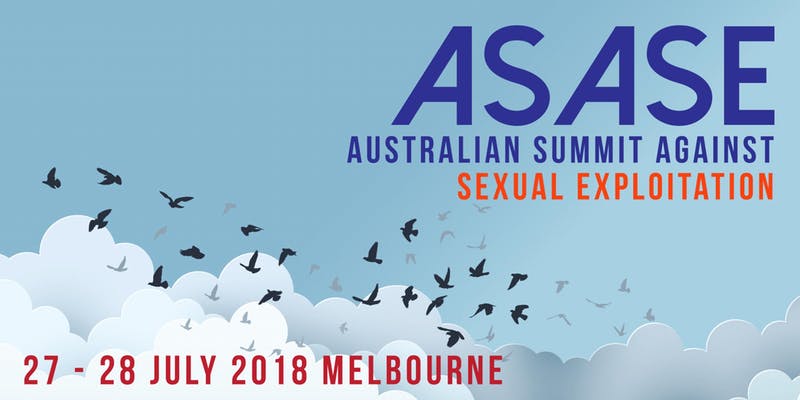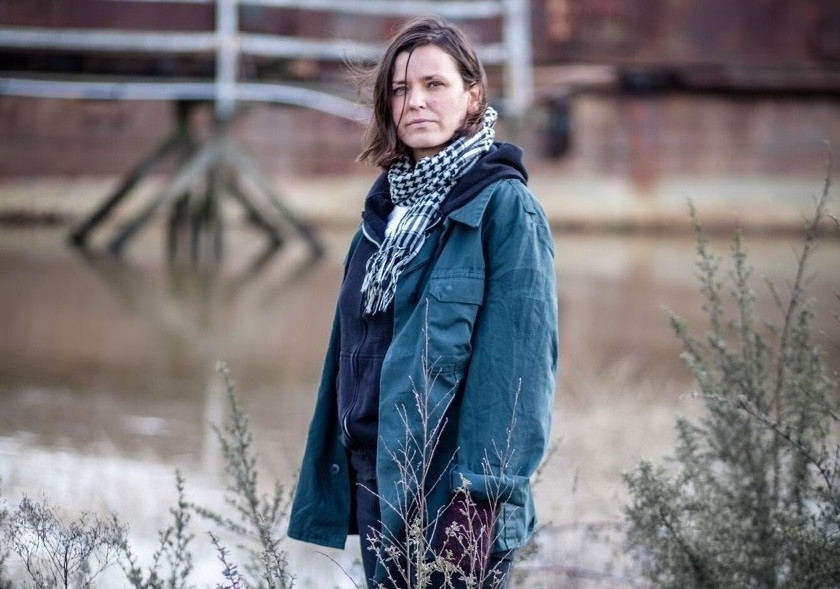
by Deep Green Resistance News Service | Jul 10, 2018 | Prostitution
by Joanna Pinkiewicz / Deep Green Resistance Australia
Australia has different legislations in regards to prostitution in each state. For example New South Wales has almost full decriminalisation and definitely in favour of brothel owners, less so for individual, who can be charged for “living on the earnings of prostitute” or soliciting for prostitution outside dwelling, school, church or hospital. In Victoria street sex work is illegal and brothels and premises based work needs to be licenced. In reality, NSW police reports show that legal operations have connections to organised crime, drug and people trafficking and in Victoria we are seeing surge in premises, both registered and under the cover of massage parlours and unchecked conditions and practices within registered brothels.
While many countries in Europe and recently in the US (US Greens Party voted for change in policy on prostitution and support the Nordic Model) the push to introduce the abolitionist approach has been coming from the left in the name of justice and equality for women, in Australia the left has been supporting the “sex worker” lobby groups and the sex industry itself, contributing to normalisation of sex purchase by men and expansion of the sex trade industry.
It came as a bit as a surprise to see that in April a branch of Victorian Liberal Party proposed a motion in support of the Nordic Model, which aims at addressing the demand for prostitution via penalising the buyer and not targeting those who are in prostitution.
It also came as a surprise to have a very public supporter of the Nordic Model within the Greens Party, Kathleen Maltzahn, state that she won’t support the Vic Liberal Party’s motion for the Nordic Model if and when it goes up for a vote. Maltzahn is known for her grass roots work, Project Respect, an exit program for women in prostitution, which she established after working in Philippines and seeing first-hand the insidious nature of sex trade. She has been going against her own party’s policy, which supports full decriminalisation. She has been widely criticised by those in her own party as well as those in the pro sex lobby groups. Upon the release of her statement, a criticism also came from parts of the abolition movement. I does look like a significant pressure has been placed upon her from the party leaders to make that statement. One thing is clear, we need more radical feminist analysis of prostitution in the Green’s party, more radical feminists being active within the mainstream left to bring about change.
Many activists within the abolishion movement hesitate at working with the Liberal Party or Christian organisations, due to disagreements on details or due to their stand regarding other women’s rights issues.
I have asked Simone Watson, director of Nordic Model Australia Coalition, what she thinks about working with the Liberal Party on this and she said this:
“My concerns around the Victorian Liberal Party endorsement of the Nordic/Abolitionist Model were that their first proposal was not in fact the Nordic/Abolitionist model at all.
“The initial draft was a serious red flag to me as it only focused on criminalising buyers in illegal brothels. It is already illegal to buy sexual access in illegal brothels. Yes, it aimed to decriminalise the prostituted women in those same brothels, but offered no exit programs and no changes to legislation across the board. So my reading of it was that it would be doomed to failure. I do not think my concerns around such a premise are unwarranted. It failed to take in to account the inefficacy of prohibition laws on prostitution; it failed to capture the intrinsic and essential point of the abolitionist approach. Their proposal was still rooted in the dangerous ground of prohibition. And prohibition fails. Some saw this as at least a start, however, the Nordic/Abolitionist Model cannot be undertaken half-baked. To do so would be incredibly dangerous and anathema to the law they claimed to be endorsing. To their credit they have since recognised that their initial proposal was incomplete.
“Do I trust them? Well, I have some trust, especially as they took considerable time to listen to survivor’s and our allies’ concerns on this. They certainly have taken more time than the Greens or Labor, which is why the Green Party USA should be commended for their determination to support the abolition of the sex trade and all major parties here should take note of that.
“For me, working with political parties as a sex-trade abolitionist is fraught because I often do not agree with many of their other policies. For example the Liberal’s alliance with anti-woman organisations, those who are against abortion and so on. But if a party is truly dedicated to abolishing the sex-trade, extinguishing the ongoing commodification of women, and women’s rights to be free from sexual exploitation, then I will support them on that particular policy. Again it is hard to trust any particular party on this issue, but if they are willing to amend their initial proposal and actively endorse the Nordic/Abolitionist model as it is intended in full, I support that unequivocally.”
Simone’s response highlights critical issues in approaching the Nordic Model with wrong motivation, poor understanding of the process involved as well as half-baked financial commitment, all critical to its success.
To summarise, the Nordic Model requires a three pronged approach:
- Establishment of exit and support programs for people in prostitution.
- Education of the public and retraining of the police
- Enforcement of the new laws by providing funding to dedicated police people and social workers.
The laws themselves aim at stoping trafficking and curbing growth of the global sex trade via penalising the buyers and pimps.
Other important news from Australia is the upcoming Australian Summit Against Sexual Exploitation (ASASE) on 27-28 of July in Melbourne. Key speakers of the summit on the subject of prostitution are:
- Julie Bindel (UK)
- Sabrinna Valisce (SPACE International)
- Simone Watson (Normac)
- Sarah M Mah (Asian Women for Equality, Canada)
I’m hoping that the summit will bring more allies to the abolition movement in Australia, who can then plan for the consultation process needed when the Nordic Model gets a motion vote in Victoria.
Joanna Pinkiewicz is a DGR Australia member; environmental activist, women’s right activist artist and mother.

by Deep Green Resistance News Service | Aug 10, 2016 | Strategy & Analysis
Featured image by Vanessa Vanderburgh
By Joanna Pinkiewicz / Deep Green Resistance Australia
Most people in the industrial civilized world will come to a point of crisis, loosely translated from its Greek origin as: “testing time” or “an emergency event.”
An ongoing feeling of pressure, instability or a threat can all bring on such crisis. These events shake our whole being, alarm our physical bodies and rupture our rational mind. The advice for dealing with a crisis that is perceived as “personal” or “individual” often follows a set of clear, practical steps:
- Slow your breath to anchor yourself in the present
- Take a note of your emotions or bodily sensations
- Open up and express your thoughts
- Pursue a valued course of action
The last step is particularly interesting, as it suggests questioning: What do I value the most? What do I stand for? How do I want to see myself respond?
As much as a crisis brings many negatives, such as anxiety and depression, it also brings an opportunity to re-examine our lives and expand our understanding of what is happening in the world or to the world around us. It forces us to examine and to make a choice: are we going to be a bystander or are we going to become courageous in the face of a looming threat?
Research on the psychology of resistance suggests, that access to support and the right type of information is crucial to help those wanting to understand what is really happening to us and the world, as well as, what can be done to address it.
The authors of Courageous Resistance, The Power of Ordinary People list certain factors that contribute to ordinary people becoming resisters in the face of injustice or impending threat. These include a combination of:
- Preconditions: previous attitudes, experiences and internal resources
- Networks: ongoing relationships with people that offered information, resources and assistance and
- The Context itself: political climate, severity of the situation
We understand courageous resistance to be a conscious process of decision making, which is affected not only by who the decision maker is, but where they are and who they know at the particular time they become aware of a grave injustice…
We define “courageous resisters” along three dimensions: First, they are those who voluntarily engage in other-oriented, largely selfless behaviour with significantly high risk or cost to themselves or their associates. Second, their actions are the result of a conscious decision. Third, their efforts are sustained over time. [i]
Humanity today faces ongoing stress from living in the civilized world. By and large, we have managed to adapt to changes that have been imposed on us, such as higher density living and working conditions. However the escalated threat of armed violence and impending effects of climate change bring on new types of crises, which needs not only immediate response, but creation of a completely new culture. The current culture likes us to believe that the crises we are experiencing are “individual,” due to a weakness or an illness. If we choose to believe this, we are more likely to suffer from helplessness and not participate in creating this new culture.
Aric McBay explains this in Deep Green Resistance, Strategy To Save The Planet:
If someone is dissatisfied with the way society works, they say, then it is that individual’s personal emotional problem. Furthermore, the individual traumas perpetuated by those in power on individual people, on groups of people, and on the land, can seem random at first glance. But if we can trace them back to their common roots—in capitalism, in patriarchy, in civilization at large—then we can understand them as manifestations of power imbalance, and we can overcome the learned helplessness…[ii]
To begin to create a culture of resistance individuals must drop loyalty to the oppressive status quo and its systems. Two things may prevent us from fully committing to resistance: fear of punishment or separation from our kin (friends, family). While loss of “belief” in “redeeming” the existing culture is a first step towards resistance, separation from dependency on the existing systems is gradual.
As building an effective resistance culture is a long process involving generations, we must be wise at preserving our health and using our resources.
Listed below are steps that effective groups or communities follow in response to a crisis that is not personal, but wide spread and caused by either natural (earthquake, flood) or man-made circumstances (occupation, oppression, ecocide).
- Prepare: clarify our values, recruit people, gather resources, and devise the strategy
- Respond: assign roles and responsibilities, implement strategy
- Recover: extend support networks, rebuild communities, and establish new organizations
Resilience building will come from commitment and co-operation in all of those stages. After the recovery from a crisis, a group gains valuable experience and is able to refine the “emergency” response plan and train newcomers.
Experience of past resisters demonstrates rise in organisational, strategic and physical skills among individuals as well and rise in strength and independence of a group.
I am thankful for my crisis. Like a loud warning siren it told me that things are not right in the world, that I must increase my awareness and prepare for the future.
My crisis led me to discover techniques and practices that reconnected me with my body. I discovered that reconstruction of mental and physical health goes hand in hand with protecting the environment. By recognising the physical and spiritual nourishment we receive from our forests, rivers, oceans, a commitment to environmental action is born.
Taking responsibility was the first step to my healing and the beginning of an authentic life. Such path does not require perfection, but courage and imagination to create new ways of living and existing. To work as a collective in the name of all nature’s communities is a revolutionary path of resistance we desperately need today.
Deep Green Resistance is a global radical environmental organization with a strategy to address our impending planetary crisis. We have recruited capable and experienced individuals to guide and work together in implementing our strategy and fulfill our vision to dismantle the industrial civilization, assist the planet’s recovery and build sustainable communities with decentralized governance.
Join the many existing chapters or start a new one! Become a conscious resister!
Notes:
[i] Thalhammer, Kristina E.; O’Loughlin, Paula L.; Glazer, Myron Peretz; Glazer, Penina Migdal; McFarland, Sam; Shepela, Sharon Toffey; Stoltzfus, Nathan. Courageous Resistance, The Power of Ordinary People. New York: Palgrave Macmillan, 2007.
[ii] McBay, Aric; Keith, Lierre; and Jensen, Derrick. Deep Green Resistance: Strategy to Save the Planet. New York: Seven Stories Press, 2011.



